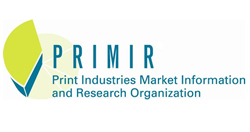
 The printing-research group PRIMIR released three studies covering the industry, including: Trends in Books: 2008-2012; Sustainable Print in a Dynamic Global Market; and Media Mix and the Impact on Print: 2003-2007-2012.
The printing-research group PRIMIR released three studies covering the industry, including: Trends in Books: 2008-2012; Sustainable Print in a Dynamic Global Market; and Media Mix and the Impact on Print: 2003-2007-2012.
As a potential enticement to purchase the US$4,500 reports (each, for non-members), PRIMIR provided the following preview statistics (based primarily on U.S. data):
(The text below is taken directly from PRIMIR press releases.)
Trends in Books: 2008-2012
• Printed books reached the peak of their product life cycle with publishers’ net sales of 3.3-billion book units in 2007.
• In 2008, six major industry segments in the book industry accounted for 3.0 billion publisher net book copies valued at US$35.7 billion.
• Printed books were headed toward a new record high in 2008 when the economic recession hit full force. Book content, in its present paper form, will continue to be a mainstay product through the 2009-2012 forecast period, but at reduced volume levels.
• Book content will morph from being primarily an ink-on-paper product to a multiple-media product distributed through a variety of channels.
Media Mix and the Impact on Print: 2003-2007-2012
• By the end of 2007, total U.S. media and marketing communications spending levels exceeded US$779 billion, with a 5-year compound annual growth rate of 2 percent.
• Advertising media spending accounted for only 32% of this total (above), with a softening of spending levels in 2007 and overall declines in 2008 and 2009.
• Non-media spending channels continued to grow at a 2% compound annual growth rate, fueled by steady investments in promotional programs.
• The study identifies six notable marketplace forces in relation to media and marketing communications spending through 2012, such as the growth in the 65+ population, adoption rates for Internet-enabled mobile devices; and global economy.
Sustainable Print in a Dynamic Global Market
• Conducted for PRIMIR by Pira International, the research revealed that few companies in the print industry who claim to be ‘green’ truly are.
• Most printers claim to be ‘green’ simply because they are FSC or SFI certified.
• The study revealed that the more progressive firms have a culture – an all-out corporate commitment to sustainability – with full time staff dedicated to that purpose.
• In 2006, the paper industry was the U.S.’s second largest user of electricity, with consumption of 75 billion kilowatt hours. On the other hand, data centers and servers were close behind, having consumed 61 billion kilowatt hours of electricity.
Print this page